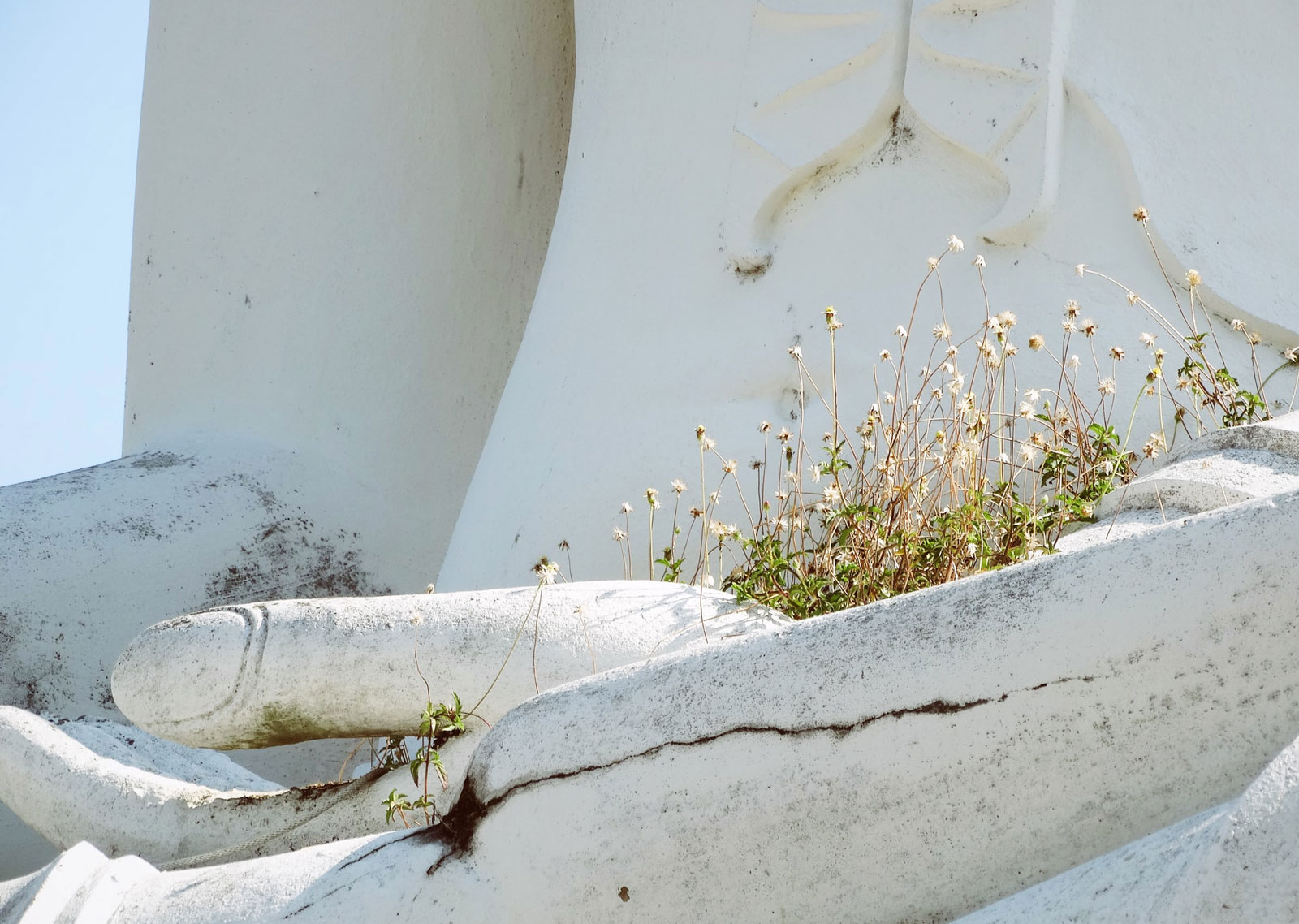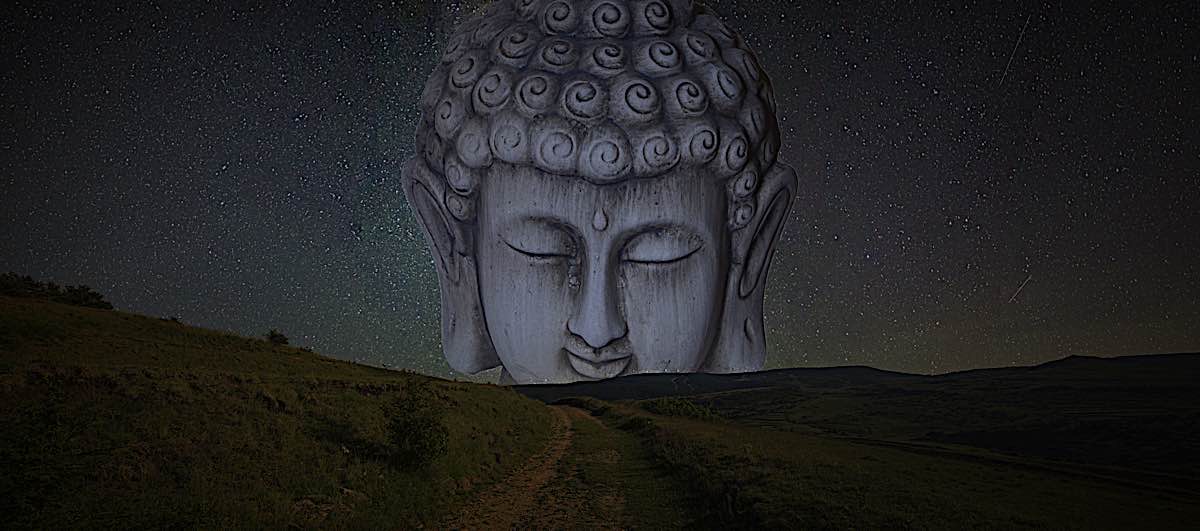What We Gain When We Learn to Let Go
There are two sides to this Buddhist practice: letting go of something and letting go into something. The post What We Gain When We Learn to Let Go appeared first on Tricycle: The Buddhist Review.

Meditation Meditation Month 2023
There are two sides to this Buddhist practice: letting go of something and letting go into something.
By Gil Fronsdal Jan 23, 2023 Photo by Melvina Mak
Photo by Melvina MakLetting go is an important practice in everyday life, as well as on the path of liberation. Daily life provides innumerable small and large occasions for letting go of plans, desires, preferences, and opinions. It can be as simple as when the weather changes, and we abandon plans we had for the day. Or it can be as complex as deciding what to sacrifice, when pulled between the needs of family, friends, career, community, or spiritual practice. Daily life provides many situations where letting go is appropriate, or even required. Learning how to do so skillfully is essential to a happy life.
Buddhist practice leads to a letting go that is more demanding than what ordinary life usually requires. Beyond relinquishing particular desires and opinions, we practice letting go of the underlying compulsion to cling to desires and opinions. The liberation of Buddhism is not just letting go of outdated and inaccurate self-concepts; it also involves giving up a core conceit that causes us to cling to ideas of who we are or aren’t. Liberation is releasing the deepest attachments we have.
The practice of letting go is often mistrusted. One good reason for this mistrust is because, without wisdom, it is easy to let go of the wrong things; for example, when we let go of such healthy pursuits as exercising or eating well, instead of our clinging to those pursuits. Another reason for mistrust, is that letting go, or renunciation, can suggest deprivation, weakness, and personal diminishment if we think we have to abandon our views and wishes in favor of the views and wishes of others.
It is possible to let go either of a thing or of the grasping we have to that thing. In some circumstances, it is appropriate to give something up. In others, it is more important to let go of the grasping. When someone is addicted to alcohol, it is necessary to renounce alcohol. However, when someone is clinging to the past, it is not the past that needs to be abandoned, rather it is the clinging. If the past is rejected, it can’t be a source of understanding. When there is no clinging to it, it is easier to learn the lessons the past provides.
At times, it is important to understand the shortcomings of what we are clinging to before we are able to let go. This may require investigation into the nature of what we are holding on to. For example, many people have found it easier to let go of arrogance when they see clearly the effect it has on one’s relationships with others. When we see clearly what money can and can’t do for us, it can be easier to let go of the idea that money will give us a meaningful life.
Sometimes it is more important to understand the shortcomings of the grasping itself rather than the object of grasping. Grasping always hurts. It is the primary source of suffering. It limits how well we can see what is happening. When it is strong, clinging can cause us to lose touch with ourselves. It interferes with our ability to be flexible and creative and it can be a trigger for afflictive emotions.
By investigating both the grasping itself and the object of our grasping, it becomes possible to know which of these we need to let go of. If the object of grasping is harmful, then we let go of that. If the object of grasping is beneficial, then we can let go of the grasping so that what is beneficial remains. Helping a neighbor, caring for your own health and welfare, or enjoying nature can be done with or without clinging. It is accomplished much better without the clinging.
The Buddhist practice of letting go has two important sides that fit together like the front and back of one’s hand. The first side, which is the better known, is letting go of something. The second side is letting go into something. The two sides work together like letting go of the diving board while dropping into the pool, or giving up impatience and then relaxing into the resulting ease.
While letting go can be extremely beneficial, the practice can be even more significant when we also learn to let go into something valuable. From this side, letting go is more about what is gained than what is lost. When we let go of fear, it may also be possible to let go into a sense of safety or a sense of relaxation. Forsaking the need to be right or to have one’s opinions justified can allow a person to settle into a feeling of peace. Letting go of thoughts might allow us to open to a calmer mind. By letting go into something beneficial, it can be easier to let go of something harmful. At times, people don’t want to let go because they don’t see the alternative as better than what they are holding on to. When something is clearly gained by letting go, it can be easier to do so.
A wonderful result of letting go is to experience each moment as being enough, just as it is.
We can see the Buddhist emphasis on what is gained through letting go by how the tradition understands renunciation. While the English word implies giving something up, the Buddhist analogy for renunciation is to go out from a place that is confined and dusty into a wide-open, clear space. It is as if you have been in a one-room cabin with your relatives, snowed in for an entire winter. While you may love your relatives, what is gained when you open the door and get out into the spring probably feels exquisite.
One of the nice things about letting go into something is that it has less to do with willing something or creating something than it does with allowing or relaxing. Once we know how to swim, it can be relaxing to float by allowing the water to hold us up. Once we know how to have compassion, there may be times when we not only let go of ill-will but also let go into a sense of empathy. Letting go of fear, may then also be resting back into a sense of calm.
A wonderful result of letting go is to experience each moment as being enough, just as it is. It allows us to be present for our experience here and now with such clarity and freedom that this very moment stands out as something profound and significant. We can let go of the headlong rush into the future, as well as the various, imaginative ways we think, “I’m not enough” or “this moment is not good enough,” so we can discover a well-being and peace not dependent on what we want or believe.
A fruit of Buddhist practice is to have available a greater range of wholesome, beautiful, and meaningful inner states to let go into. In particular, one can come to know a pervasive peace, accessible through both letting go and letting go into. The full maturity of this peace is when we let go of our self as the person experiencing the peace. With no self, there is just peace.
♦
This teaching was originally published on the Insight Meditation Center’s blog. For an audio practice by Gil Fronsdal, listen to “The Joy of Letting Go.”
This article was originally published on January 1, 2022.
![]()
Thank you for subscribing to Tricycle! As a nonprofit, we depend on readers like you to keep Buddhist teachings and practices widely available.

 UsenB
UsenB 
































